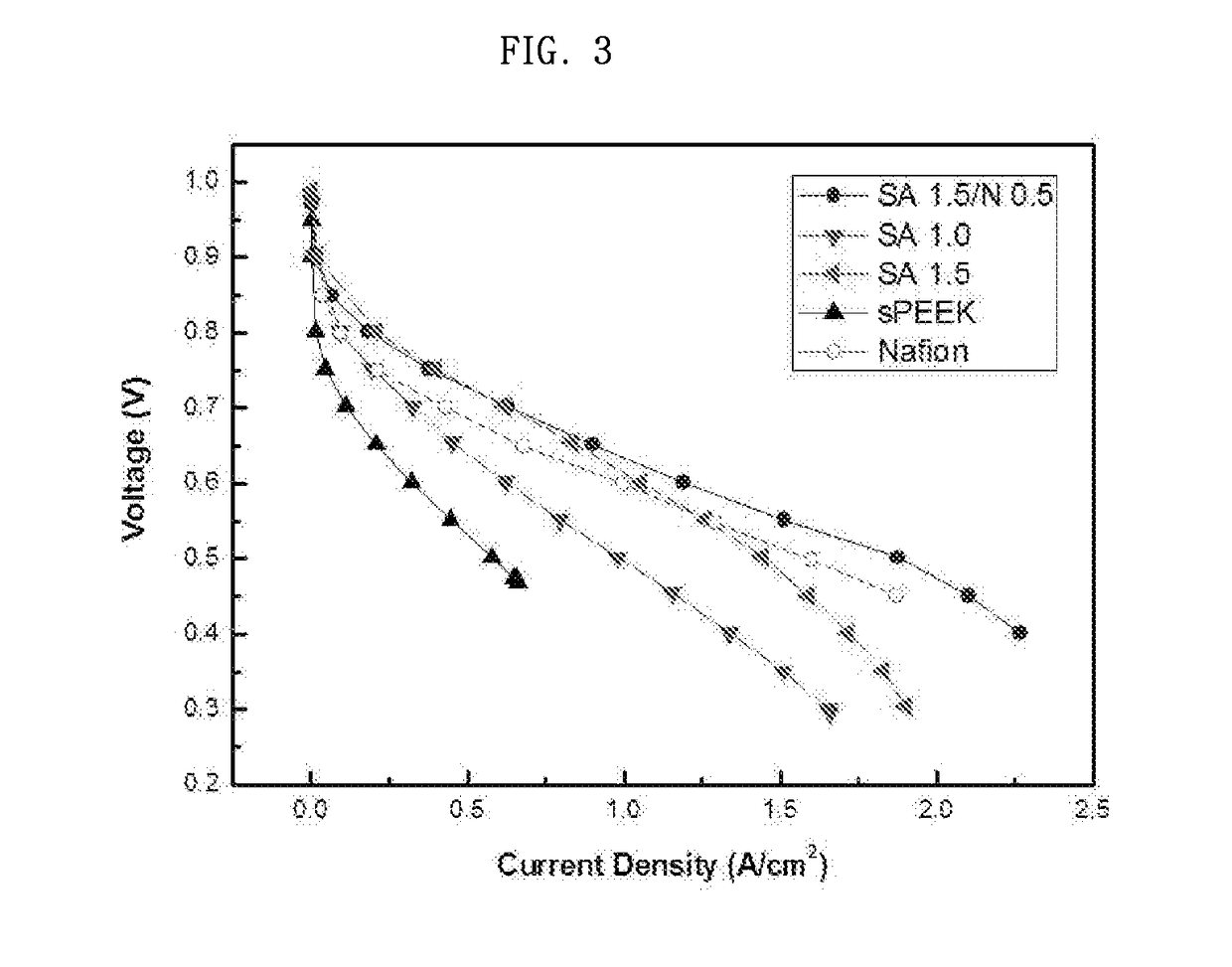Hydrocarbon-based nanocomposite membrane comprising polyhedral oligomeric silsequioxanes having proton donor and proton acceptor, and method for manufacturing same
a polyhedron and nano-composite technology, applied in the direction of sustainable manufacturing/processing, final product manufacturing, electrochemical generators, etc., can solve the problems of low proton conductivity of this composite membrane, poor mechanical strength, high production cost, etc., to improve the ion conductivity, facilitate the hopping of protons (cations), and excellent proton conductivity
- Summary
- Abstract
- Description
- Claims
- Application Information
AI Technical Summary
Benefits of technology
Problems solved by technology
Method used
Image
Examples
example 1
[0073]1. Synthesis of polyhedral oligomeric silsesquioxane having a sulfonic group (POSS-SO3H (POSS-SA))
[0074]First, 1g of octaphenyl POSS was mixed with 5 mL of chlorosulfonic acid and, then, the solution was stirred overnight at room temperature. The solution was then poured into 200 ml of THF, in which precipitates were filtered. This step was repeated until a neutral pH was reached. Brown-colored solids were obtained as a result of drying under reduced pressure.
[0075]H-NMR(D2O)-7.54(dd;ArHmeta to POSS), 7.81-7.83(2dd; ArH para to SO3H,ArHpara to POSS), 8.03(dd; ArH ortho to SO3HandPOSS).
[0076]FT-IR: 3070 (OH of SO3H), 2330 (SO3H-H2O), 1718, 1590, 1470, 1446, 1395, 1298, 1132 (SO3 asymm), 1081 (SO3 symm), 1023 (SiOSi asymm), 991, 806 (SiOSi symm)
[0077]2. Synthesis of polyhedral oligomeric silsesquioxane having an amine group (POSS-NH2 (POSS-N))
[0078]
[0079]5 g of OPS and 30 mL of fuming nitric acid were added into iced water in a beaker and, then, mixed for about 30 min. The mixtu...
PUM
| Property | Measurement | Unit |
|---|---|---|
| Fraction | aaaaa | aaaaa |
| Fraction | aaaaa | aaaaa |
| Current | aaaaa | aaaaa |
Abstract
Description
Claims
Application Information
 Login to View More
Login to View More - R&D
- Intellectual Property
- Life Sciences
- Materials
- Tech Scout
- Unparalleled Data Quality
- Higher Quality Content
- 60% Fewer Hallucinations
Browse by: Latest US Patents, China's latest patents, Technical Efficacy Thesaurus, Application Domain, Technology Topic, Popular Technical Reports.
© 2025 PatSnap. All rights reserved.Legal|Privacy policy|Modern Slavery Act Transparency Statement|Sitemap|About US| Contact US: help@patsnap.com



